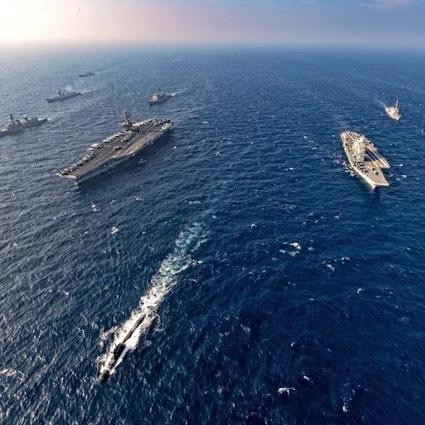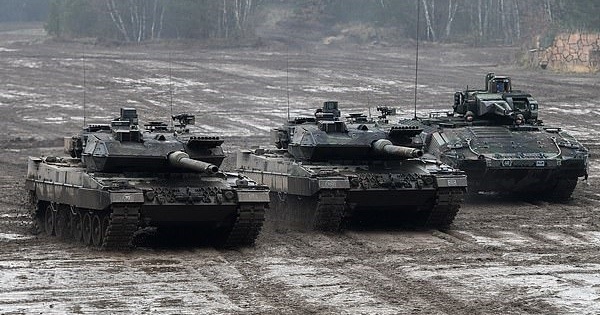During this trip, Mr. Biden will visit two of the country’s most important allies America are Korea and Japan. The main aim is to draw these countries into a lasting economic and security alliance to counter China’s growing influence in the region.
According to Politico, President Biden will take advantage of his 4-day visit, starting today (May 20), to call for support for the US Indo-Pacific Strategy and the Indian Economic Framework – Pacific – a regional trade plan that he will launch in Japan. This visit follows the ASEAN-US Special Summit last week, where Mr. Biden met with many Southeast Asian leaders.
“The message we were trying to send during President Biden’s Asia visit was a vision of what the world would be like if democracies and societies worked together to shape the rules of the world. the way to define the regional security architecture, to forge strong historic alliances. We think that message will be heard everywhere and in Beijing,” said national security adviser Jake Sullivan.
Tension between Japan and Korea
An important plan of Biden’s Indo-Pacific strategy is to promote close cooperation between the US and its allies and partners, especially Japan and South Korea. But the plan seems “easier said than done”, as territorial, trade and historical disputes have escalated Japan’s relations with South Korea in recent years.
Japan’s exclusion of South Korea from its list of “reliable” trading partners in 2019 angered Seoul. At the time, South Korea’s deputy national security adviser, Kim Hyun-chong, accused Japanese Prime Minister Shinzo Abe of equating South Korea as a “hostile country.” Although both of these figures are no longer in office, the conflict between the two countries is still unresolved.
Mr. Biden needs to convince the new South Korean President Yoon Suk Yeol – who took office on May 10 and Japanese Prime Minister Fumio Kishida that the strained relationship between the two countries will undermine the Indo-Pacific strategy. Binh Duong of America.
“President Biden will have the opportunity to realize that the so-called historic controversies in the region have become a security threat,” said Alexis Dudden, a history professor at the University of Connecticut.
Last week, South Korean President Yoon Suk Yeol and Japanese Foreign Minister Yoshimasa Hayashi pledged to improve relations. But this certainly cannot be done overnight. In an interview with Politico, Bill Hagerty, a former US ambassador to Japan, said: “I’m not too optimistic because I’ve been following this relationship for decades. As each country’s internal affairs become more difficult, especially politically, these tensions are often easily rekindled.”
Confronting the North Korean nuclear threat
South Korean President Yoon Suk Yeol is likely to urge Mr. Biden to deploy US tactical nuclear weapons in South Korea – something Washington has always denied up to now. “American policy doesn’t support that,” said Mark Lambert, Deputy Assistant Secretary of State for Korea and Japan.
The United States had deployed tactical nuclear weapons on the Korean Peninsula for decades before fully withdrawing it in 1991, as a way to push North Korea to give up its nuclear weapons program. Since that time, the United States has relied on its nuclear submarine force as a deterrent against any potential North Korean attack.
Still, Pyongyang’s test-firing of 14 nuclear-capable ballistic missiles so far this year may prompt the United States to rethink the South Korean proposal. The director of the US Defense Intelligence Agency Lieutenant General Scott Berrier said that North Korea may conduct more weapons tests, including nuclear weapons in the near future. In April, North Korean leader Kim Jong Un warned that he would respond to any attack by South Korean forces with nuclear weapons or even launch a pre-emptive nuclear strike if attacked by the country. This menace.
According to analysts, Biden is unlikely to redeploy tactical nuclear weapons on the Korean Peninsula unless the threat from Pyongyang increases. Instead, he may seek to allay President Yoon Suk Yeol’s concerns by accepting his request for South Korea’s addition of the Terminal High Altitude Area Defense (THAAD) anti-missile system. missiles to counter the North Korean missile threat, a move that is sure to anger Pyongyang and Beijing.

A joint exercise of the Quartet in 2021. Photo: Reuters
Promote Korea’s plan to join the Quartet
During his trip to Asia, President Biden is expected to have a meeting with the leaders of the Quartet – an informal alliance of the US, India, Australia and Japan. Earlier, President Yoon Suk Yeol said he would “actively consider” joining the Quartet if South Korea was invited. During the election campaign, Mr. Yoon pledged to increase South Korea’s participation in the Quartet’s working groups.
South Korea’s participation will advance President Biden’s goal to bring Tokyo and Seoul closer together. “We are interested in improving relations between Japan and South Korea,” said James Kelly, former US assistant secretary of state for East Asian and Pacific affairs. Therefore, Korea’s participation in the Quartet will help this process. They may be invited to be part of the Quartet’s working groups or to be observers. There are many ways to do that.”
Strengthening India’s role in the Quad
The US is looking to strengthen ties with India as one of the 10 core efforts of the Indo-Pacific Strategy. “Both the US and Europe have a desire to engage more closely with India,” said Kurt Campbell, White House Coordinator for the Indo-Pacific. In many respects, it is in our best interests to step up our cooperation with India to make it more of a pivot towards the West.”
However, this is a big challenge because India has a decades-long defense, trade and diplomatic relationship with Russia. Not to mention, Moscow is also New Delhi’s largest arms supplier. So far, India has avoided condemning Russia’s attack on Ukraine, although other members of the Quartet have voiced strong objections.
“That makes India the exception,” said Alison Szalwinski, vice president of research at the Bureau of Asian Studies. Its stance may cause friction within the Quartet.” But the Biden administration doesn’t seem too worried. Bloomberg reported on May 18 that the Biden administration is now looking to replace that influence of Russia by proposing a large arms sale to India, valued at up to $500 million.
The advantage for the US lies in the fact that the relationship between India and China in the past time has seriously deteriorated after the border conflict in the Galwan Valley in 2020.
Promoting the Indo-Pacific Economic Framework
US Commerce Secretary Gina Raimondo confirmed this week that President Biden will officially launch the Indo-Pacific Economic Framework (IPEF), a major trade initiative in the region, when he arrives. visit Tokyo. Speaking to the press, Gina Raimondo said: “I have spent a lot of time chatting with our partners in the Indo-Pacific. They both want the US to have a larger presence and a clear economic strategy. IPEF is proof of that.
The IPEF will focus on four key pillars: facilitating trade, strengthening supply chain resilience, establishing infrastructure and processes to reduce carbon emissions, improving tax systems and fighting corruption. Through this framework, Washington aims to promote economic growth and benefit the people of the region.
However, the agreement does not offer traditional perks, such as market access, and it is unclear whether it includes the enforcement mechanisms needed to be effective. Mr. Biden will need to clearly define the benefits that the IPEF offers to convince potential participants of its value.
Since November 2021, members of President Biden’s cabinet have traveled around the region seeking support for negotiations. Japan, South Korea, Australia and New Zealand are expected to participate in the initial round of negotiations. And US-ASEAN Business Council President Ted Osius said, among Southeast Asian nations, Singapore, Malaysia and the Philippines are likely to join the negotiations.
Analysts say that if Mr. Biden can return to Washington with the commitment of the President of South Korea to join the Quartet and gain the interest of Japan, South Korea, India and Australia on membership status, it is not surprising that Mr. member of the IPEF, he can claim victory in creating a new platform in the US-led region to counter China’s growing influence and “unlimited” partnership. between Beijing and Moscow.
at Blogtuan.info – Source: Soha.vn – Read the original article here



